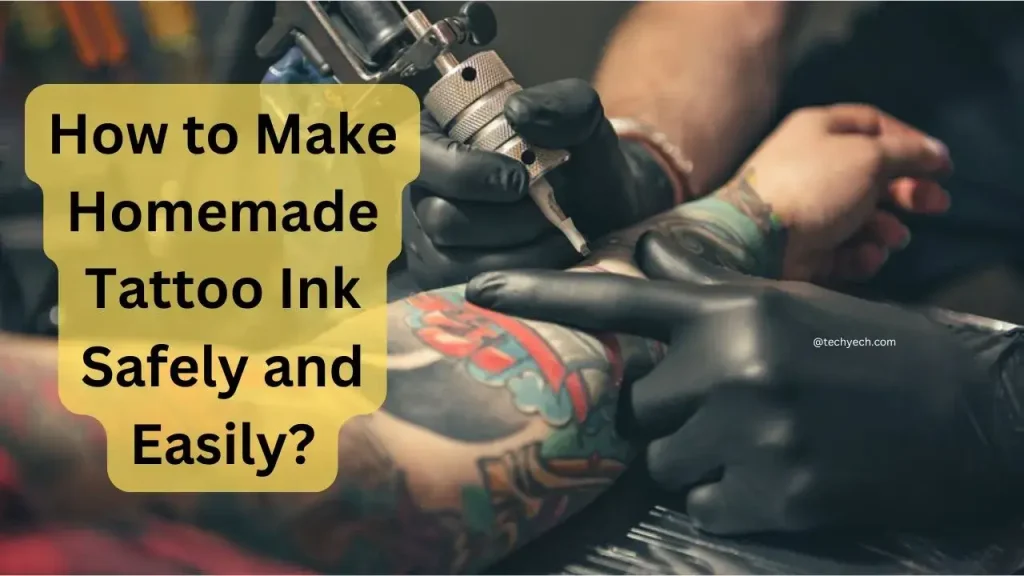Ever wanted to create your own tattoo ink from scratch? Whether you’re a DIY enthusiast looking for a creative weekend project or a budding tattoo artist honing your skills, making homemade tattoo ink can be an exciting experience. But before we jump in, it’s important to note that professional-grade tattoo ink is always the safest choice. Homemade ink should only be used for practice on synthetic surfaces or temporary tattoos—not for permanent body art. With that said, let’s explore how you can make your own tattoo ink safely and have some fun while you’re at it!
Why Consider Homemade Tattoo Ink?
1. Cost-effective for Small Projects
Buying tattoo ink can be expensive, particularly for practice or one-off designs. Making your own ink at home is an affordable alternative for small projects or experiments.
2. Personalization
When you make tattoo ink yourself, you’re in complete control. You can tailor the color, consistency, and even ingredients to match your vision. Want a unique shade or a specific thickness? You’re the boss!
3. An Eco-Friendly Approach
By using natural ingredients, you’re taking a sustainable step toward reducing chemical exposure and waste. It’s a win for you and the environment.
Now, let’s get to the fun part—how to make easy homemade tattoo ink with items you might already have on hand.
Materials You’ll Need to Make Homemade Tattoo Ink
Before you start, make sure you’ve gathered all the essentials.
- Carbon-based material (e.g., charcoal, burnt wood ash)
- Distilled water or vodka (for a smooth texture and to act as a preservative)
- A sterilized container for mixing your ink
- Sterilized tools (spoon, bowl, etc.)
- Optional: Natural pigments (for added color variety)
Pro Tip: Always ensure your tools and workspace are clean and sterilized to minimize the risk of contamination—even if this ink is only for non-skin use.
Also Try – Make Beetroot Powder at Home
Step-by-Step Guide to Making Tattoo Ink
Step 1: Create the Base
- If you’re using wood, burn it until it turns to fine ash. High-quality charcoal works just as well.
- Ensure your ash or charcoal particles are finely sifted to avoid clumps in the ink mixture. Use a fine-mesh strainer if needed.
Pro Tip: The finer the ash, the smoother your ink will be!
Step 2: Mix the Ingredients
- Add a small amount of distilled water or vodka to the ash or charcoal.
- Mix thoroughly until you achieve an ink-like consistency. Start with a teaspoon of liquid and adjust based on how thick or thin you want your ink.
Tip: If the mixture feels too chunky or dry, add a drop of liquid at a time until it’s just right.
Step 3: Store the Ink Safely
- Pour your homemade tattoo ink into a sterilized, airtight container to keep it fresh and free from contaminants.
- For best results, store the ink in a cool, dry place and use it within a few days. Remember, homemade ink lacks the preservatives of professional-grade formulas.
Quick Note: Don’t forget to label your container to avoid accidentally mistaking it for something else!
Tips for Using Homemade Tattoo Ink
Using your homemade tattoo ink responsibly is crucial.
- Practice on synthetic skin or paper. Homemade ink is ideal for practicing tattoo designs or temporary body art but should not be used for permanent tattoos on human skin.
- Test the ink first. Try your DIY ink on paper or fabric before using it for any project. Look for smooth application and vibrant color.
- Always sanitize tools. Sterilizing needles, brushes, or applicators is a non-negotiable step to prevent contamination.
For example, I once crafted a batch of homemade ink for fun and tested it on paper. It worked perfectly for creating intricate patterns, and the process helped me fine-tune my mixing skills!
Recommended – Make a Solar Cell at Home
Risks and Precautions of Homemade Tattoo Ink
While homemade tattoo ink can be a fun and creative project, it does come with some risks—especially if you’re considering using it on skin. Here’s what you need to know before proceeding.
- Health Risks: Unlike professional ink, homemade ink is not sterile or regulated, which increases the risk of infection or an allergic reaction if used on human skin.
- Limited Shelf Life: Homemade ink doesn’t have preservatives, meaning it can spoil quickly. Always make small batches and use them promptly.
- Unpredictable Results: Without precise manufacturing conditions, homemade ink may have uneven color consistency or poor longevity.
If you’re hoping to create permanent tattoos, always consult a professional tattoo artist who uses high-quality, tested inks.
Why Explore DIY Tattoo Ink?
Making homemade tattoo ink is not just a practical solution—it’s a fun, creative outlet that lets you experiment and learn in a hands-on way. Whether you’re testing designs on paper or crafting the perfect temporary tattoo for a weekend event, the process itself can be highly rewarding.
By following the simple guide and precautions above, you can enjoy the art of tattooing in a safe and responsible manner. Just remember to always prioritize safety and consider getting professional-grade materials for more serious projects.
Start Your DIY Tattoo Journey Today
Now that you know the best way to make homemade tattoo ink, it’s time to put your creativity to the test! Gather your materials, follow our step-by-step guide, and start exploring the world of DIY tattoo art.
Who knows—you might just discover a hidden talent. And, if you’ve tried your hand at this before, we’d love to hear about your experience. Share your tips or creative ideas in the comments below!


